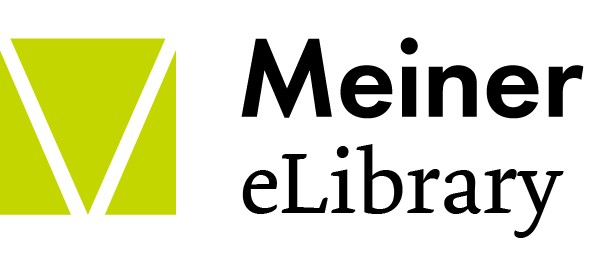Abstracts
Orit HalpernThe Planetary Test
In 1943, in the midst of the Second World War, the famous architect Richard Neutra was commissioned by the government of Puerto Rico to build hospitals and schools. In response, he produced a number of prototypes and processes investigating different ways to ventilate and climate control buildings in the sub-tropical environment of the island through technology. Neutra famously labeled his work in Puerto Rico a Planetary Test. This article examines this history of making climate a medium for design and the implications of these practices for our present
Natalie Binczek: Harsdörffers Geschirr
Der deutsche Barockdichter Georg Philipp Harsdörffer skizziert eine Theorie der Emblematik, die vor allem dessen Anwendungsvielfalt hervorhebt. Er hebt dabei besonders den Unterschied zwischen buchinterner und buchexterner Verwendung auf, indem er sich nicht nur für die Aufnahme der Embleme in Büchern, sondern auch auf Geschirr und Tapeten ausspricht. Der Beitrag liest Harsdörffers extensive Überlegungen nicht nur als Beiträge zur Theorie und Geschichte der Embleme als ›Sinn-Bilder‹, sondern auch als Beitrag zur Designgeschichte.
German Baroque poet Georg Philipp Harsdörffer delineates a theory of emblematics that clearly sets itself apart from other contemporary theories, especially by its versatility. In particular, the author negates the difference between internal and external usage of emblems in books not only by promoting the incorporation of emblems into printed works but also by supporting their depiction on dishes and tapestries. This article strives to read Harsdörffer’s extensive thoughts on the matter of emblems not simply as another work on the theory and history of emblematics but rather as a contribution to design history as well.
Nicole C. Karafyllis: Zur Medialität der Samenbank, oder: die Nacht der Substanz
Die moderne Samenbank lässt sich mit Medienbegriffen beschreiben, von Bestand bis Infrastruktur. Stets bleibt als blinder Fleck die Medialität des Samens, dessen Vitalität im Dunkel der Kühlkammer künstlich verlängert wird. Der Beitrag diskutiert Varianten, das Problem der Teleologie der Natur in Medienbegriffen abzuhandeln und bietet eine neue Geschichte von ›den Bienen und den Blumen‹. Er hebt den Samen als Inbegriff einer nicht reduzierbaren Substanz hervor, dessen Latenz als mediales Apriori des Lebenden begreifbar wird.
A modern sperm bank can actually be described by using media terms such as ›stock‹ or ›infrastructure‹. However, the mediality of sperm seems to be persistently lingering in a blind spot, its vitality artificially prolonged in the dark of the cooling chamber. This article discusses different variants to treat the problem of describing the teleology of nature with the help of media terms and offers a new take on the story of ›the birds and the bees‹. The argumentation stresses the importance of sperm as the very quintessence of a non-reducible substance whose latency as a medial a priori of life thus becomes palpable
Fotis Jannidis: Digitale Geisteswissenschaft: Offene Fragen – schöne Aussichten
In den letzten zehn Jahren sind die digitalen Geisteswissenschaften von einem Randphänomen zu einem der sichtbareren Felder kultur- und geisteswissenschaftlicher Forschung geworden. Dieser Erfolg ist von Kritik begleitet und Fotis Jannidis identifiziert drei Topoi der Kritik an den Digital Humanities, die oft vorgebracht und wiederholt werden: 1. ›Das wussten wir schon vorher‹ 2. ›Die Themen der Digital Humanities sind veraltet‹ 3. Es handle sich bei den Digital Humanities um eine neue Form des Positivismus, der geisteswissenschaftliche Gegenstände nicht adäquat beschreibt. Diese drei Vorwürfe gegen die Digital Humanities werden von Jannidis aufgegriffen und auf ihren argumentativen und wissenschaftspolitischen Gehalt befragt und hinterfragt. Der Beitrag schließt mit einem Plädoyer für das Ausprobieren, Basteln und für die Neugierde auf die neu entstehenden Datensammlungen in den Bibliotheken und Archiven. Markus Krajewski hält die Erwartungen an das Innovationspotenzial der Digital Humanities dagegen für überzogen, die aus seiner Perspektive bisher über den Status einer Hilfswissenschaft nicht hinausgekommen sind. So wie die Diplomatik um die Analyse von Urkunden oder die Numismatik um die Einordnung von Münzen oder die Paläographie um die Analyse von Handschriften besorgt ist, so kümmern sich die Digital Humanities bisher lediglich um die Nahtstelle von geisteswissenschaftlichen Forschungsfragen mit computergestützten Methoden. Die eigentliche Aufgabe der Digital Humanities bestünde aber darin, die Kulturtechnik Codieren in den Vordergrund zu rücken. Denn Programmcodes lesen und schreiben zu können, seien auch für Geisteswissenschaftler eine Schlüsselkompetenz, damit die Schrift der Zukunft – die von Softwareentwicklern, Computeringenieuren und selbstlernenden Maschinen entworfenen Algorithmen – weiterhin kritisch kommentiert und interpretiert (und nicht bloß passiv angewandt) werden kann.
During the last ten years, the so-called digital humanities have developed from a footnote to being a major player in the academic field of cultural studies and humanities alike. However, success goes hand in hand with increasing criticism, and Fotis Jannidis identifies three topoi of critique digital humanities repeatedly have to face. 1. ›We already knew that‹ 2. ›The topics of digital humanities are outdated‹ 3. Digital humanities are said to be a new form of positivism not adequately describing humanities related issues. Jannides takes up these accusations against digital humanities by scrutinizing and questioning their argumentative and scientific- political substance. The article closes with a speech promoting of a phase of trial and error, of tinkering and of curiosity for the subject at hand while analyzing newly originated data collections from libraries or archives. In Markus Krajewski’s opinion, however, the expectations placed in the potential of innovation of digital humanities are exaggerated which subsequently leads him to label them an ancillary discipline. The usefulness of digital humanities is entirely limited to providing the link between humanities-related research questions and computer-based methods in the same way diplomatics relies on the analysis of records, numismatics on the process of categorizing coins or paleography on the analysis of historical manuscripts. Krajewski sees the real task of digital humanities in bringing the cultural technology of coding into the spotlight. He describes the ability to write and read source code as a key competence every modern humanities scholar needs in order to be able to critically comment and interpret the script of the future: algorithms designed by software developers, computer engineers, and auto-didactic machines.
Jane Bennett: Out for a Walk
I explore two walks, one by Henry Thoreau on a hot day in 1851 and one by a line as it winds its way into a doodle today. Walks, I contend, generate circuits of energies and affects, some issuing from people, some from elsewhere. The goal is to accent how ahuman energies and affects inscribe themselves upon selves and inflect their positions and dispositions. Borrowing a term from Lorenz Engell, I call this inscriptive inflection an ›ontographic‹ procedure. Ontography will mark the operations of a creative cosmos, of a more-than-human world continuously impressing itself upon us. At the end, I leave the ontographic to return to the linguistic, to human attempts to ›write up‹ the ahuman ontographies they experience
Sebastien Blanc: Write, neverendingly
Rather than distinguish a phenomenological moment from an ontological moment in Merleau- Ponty’s work, this article aims to recapture its unity by questioning a metaphor that traverses it: that of the writing, the text or the trace. Ontography is the name of a problem and a paradox that Merleau-Ponty’s philosophy bears and assumes: what good is it to say the Being, if it is already written, if every word breaks the silent contact it demands of us? To write is to prolong and reveal a captive meaning in things.
Dawid Kasprowicz: Die Einschreibung möglicher Dinge
Die zunehmende Digitalisierung der Wissenschaft drängt vor allem die Frage nach dem Status ihrer visuellen Objekte auf. Während immer mehr Wissenschaften von Verfahren einer Computer Visualization abhängig sind, bleiben die jeweiligen Transformationsprozesse des Wissens, die den Visualisierungen zugrunde liegen, häufig unthematisiert. Der Artikel argumentiert, dass gerade in den Visualisierungsverfahren eine ontographische Schneise zwischen der Abstraktion und Repräsentation von Wissen vorliegt, die für digitalisierte Wissenschaftskulturen zentral wird. Hierzu werden zwei Fallbeispiele aus der Geschichte der Computergrafik hinzugezogen.
The increasing digitalization of science particularly forgrounds the status of its visual objects. While more and more disciplines depend on methods of computer visualization, the respective transformation processes of knowledge on which the visualizations are based often remain unthematized. The article argues that an ontographic aisle between the abstraction and representation of knowledge lies in the visualization processes. This aisle is central to digitized scientific cultures. Therefore, two case studies from the history of computer graphics will be discussed.
Till A. Heilmann: Ontology and Ontography in Digital Imaging
Ontography is intended to represent the epistemological counterpart to the ancestral ontology as well as the genuine functioning of certain media technologies. Using the media technology of digital imaging and processing as an example, the paper discusses the problem of a simple distinction between ontological and ontographic procedures
Michael Lynch: Ontography as the Study of Locally Organized Ontologies
Ontography is distinguished from ontology in the way it pursues historical or ethnographic case studies, rather than general philosophical reflections on the nature of being. Ontography takes classical metaphysical problems, such as how to distinguish between natural entities and human technologies, but instead of offering a general solution to those problems it describes how socially, historically, and institutionally situated agents address and provisionally resolve those problems. Examples of such investigations are practical efforts to resolve the difference between research artifacts and evidence of microscopical entities in laboratory research, and cases in intellectual property law which deploy a distinction between products of nature and compositions of matter
Michael W. Stadler: Re-Drawing the Lines of Reality: The Ontography of Reversible Gestalts
The notion of ontography is characterizable as open-source, both due to its collaborative development, its heterogeneous backgrounds and its broad applicability. In my paper, I concretize these open-source aspects of ontography firstly by redefining it with reference to E. Winkler’s dialogue Die Erkundung der Linie and secondly by applying it to the Gestalt theoretical topics of figure-ground reversals and bidirectional part-whole relations.
Daniela Wentz: Existential Graphs as Ontographic Media
In a number of recent philosophical works, the concept of ontography has been raised to involve a revaluation of figurative and visual thinking against logico-conceptual thinking— i. e. a revaluation of a philosophical practice that supplements or departs from the traditional site of philosophy, language. This paper investigates the ontographic dimensions of Charles S. Peirce’s diagrammatology by focusing on his system of »existential graphs« as ontography avant la letter















